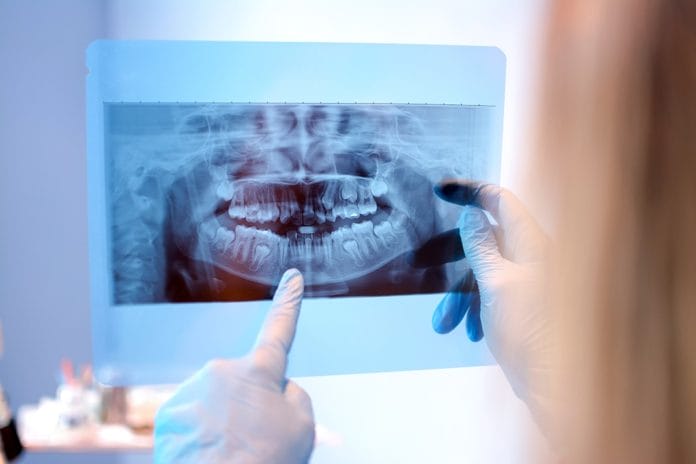When a dental hygienist struggles to obtain patient consent for the basic standard of care, the frustrating experience is not often forgotten. Eyes roll across the country during morning huddles when the hygienist spots a familiar patient name with the words “Overdue for x-rays” on the schedule.
Exploring and practicing communication skills through verbal scripting strategies can make discussions about radiographs less exhausting. The entire team, including the doctor, will need to be on board to create successful strategies when radiographs are refused. You probably won’t ever eliminate this challenge, but you may be able to reduce it by taking the following steps.
Clarify the Doctor’s Clinical Philosophy
Every practice experiences patients who refuse radiographs from time to time. Practices should have a clinical plan in place that helps determine the protocol for taking radiographs. The American Dental Association (ADA), in collaboration with the U.S. Food and Drug Administration (FDA), developed recommendations for dental radiographic examinations to serve as an adjunct to the dentist’s professional judgment regarding patient selection and radiograph frequency.1
It is recommended that clinical team members receive appropriate education regarding exposing radiographs and be informed on office protocols.1
Identify the Benefits of Radiographs
Radiographs can help the dental practitioner evaluate and definitively diagnose many oral diseases and conditions. Often, a radiograph is necessary to identify problems that are asymptomatic or undetected clinically, such as cysts, abscesses, and other pathologies. In addition, radiographs help detect decay, evaluate root structure, assess bone loss from periodontal disease, and see the status of developing teeth.
Practices should make a bulleted list of these benefits so that everyone “speaks the same language” to patients. Sometimes, a patient’s refusal is actually a request to understand why you recommend radiographs.
Ask the Patient Why They are Hesitant
It is important to understand the reason a patient has refused radiographs. Stating a set radiograph interval for all patients as a part of an “office policy” will not address the individual challenges patients express. It may also likely create further resistance by the patient.
Once you have determined the specific challenge, you can address it confidently. Generally, refusals fall into one of three categories: cost, discomfort, and radiation exposure.
Base Your Scripting on the Patient’s Challenge
Select scripting based on the specific reason for the refusal. You will be more successful if you acknowledge the reason for the resistance and work with the patient in a way that allows them to feel in control of their health care decisions. After all, don’t we all want to feel in control?
The patient will feel more in control when they have an opportunity to discuss their concerns. This is easily accomplished with, “May I ask why you don’t want to have (x-rays/images/a pano) taken today?” Maintain eye contact and listen carefully, repeating their concerns to acknowledge that you heard and understood.
Example Scripting
Responding to Cost Resistance
Example 1: I understand that cost is a concern for you. Other patients have found that it is much less expensive to pay for the diagnostic ability x-rays give us to catch possible problems when they are small and less expensive to repair.
Example 2: Knowing that cost is a concern, I would highly recommend we take x-rays to save you money down the road. The beauty of x-rays is that they give us the ability to find and treat conditions very early on – ultimately saving you money in the long run.
Example 3: I understand your concerns about x-rays. Please understand my position that I cannot give you the care you deserve without radiographs. Because you (are at low risk for dental decay, have no restorations or very few, have healthy probing depths, etc.), we can postpone your x-rays until your next visit and take the minimum amount necessary.
Discomfort
Example: I understand you have experienced (discomfort, a strong gag reflex) in the past, and I’m sure that is making you less likely to want to go through that again. Let’s work together on this. I can use a smaller sensor and get the images quickly to make it more comfortable.
Radiation Exposure
Example 1: I certainly understand your perspective. Thank you for sharing. We have had such advancements in imaging technology that dental x-rays are quite safe. The amount of radiation is extremely small due to the digital technology we use. These images provide valuable information about things we can’t see under the gums, under fillings, and between your teeth.
Example 2: I understand your concerns. Our concern for you is that we only see a small portion of the outside of a tooth without x-rays and cannot successfully diagnose issues that may not cause symptoms. Would you consider fewer images (four bitewings, set of eight images, etc.) that will keep us both comfortable – you with less radiation and us with the ability to still provide thorough care for you?
Example 3: I understand your concerns regarding radiation. Let me put these x-rays into perspective for you. A unit called a “rem” measures the “effective dose” (absorbed dose adjusted for radiation type and organ sensitivity). A rem is a large unit, much like a mile is a large unit of length, so we usually use a millirem (mrem) instead, much as you would measure in inches instead of miles for smaller measurements. One rem equals 1000 mrem.2 Advances in digital x-ray equipment allow us to get an image using much less radiation than was previously required. A set of four bitewing images typically exposes you to only about 0.4 mrem.3 In comparison, the average annual dose from natural background radiation sources (cosmic radiation, human-made elements, and naturally occurring radioactive minerals in the ground, soil, and water) is 300 mrem.3,4
Legal Risks
Improper diagnosis due to a lack of dental radiographs leaves practitioners in a state of liability. Even if you have a patient sign a form stating they willingly refuse radiographs, practitioners have an ethical responsibility to abide by the standard of care and should not participate in supervised neglect. If continued resistance occurs, the doctor needs to determine at what point they will dismiss the patient from the practice.5,6
In Closing
The bottom line is that language shapes perception. You have the power to frame the conversation in a manner that opens further dialogue and elevates oral health awareness among your patients.
Before you leave, check out the Today’s RDH self-study CE courses. All courses are peer-reviewed and non-sponsored to focus solely on high-quality education. Click here now.
Listen to the Today’s RDH Dental Hygiene Podcast Below:
References
- The Selection of Patients for Dental Radiographic Examinations. (2019, June 20). U.S. Food and Drug Administration. https://www.fda.gov/radiation-emitting-products/medical-x-ray-imaging/selection-patients-dental-radiographic-examinations
- Radiation Terms and Units. (2024, January 18). United States Environmental Protection Agency. https://www.epa.gov/radiation/radiation-terms-and-units
- Frequent Questions: Radiation in Medicine. (2024, November 24). United States Environmental Protection Agency. https://www.epa.gov/radiation/frequent-questions-radiation-medicine
- Radiation Sources and Doses. (2024, February 22). United States Environmental Protection Agency. https://www.epa.gov/radiation/radiation-sources-and-doses
- Ending the Dentist-Patient Relationship: Protect Your Patients, Protect Yourself. (2016). The Dentists Insurance Company. https://www.tdicinsurance.com/Portals/0/pdfs/lifeline/lifeline_2016_fall.pdf
- Informed Consent/Refusal. (n.d.). American Dental Association. https://www.ada.org/resources/practice/practice-management/managing-patients-informed-consent-refusal












